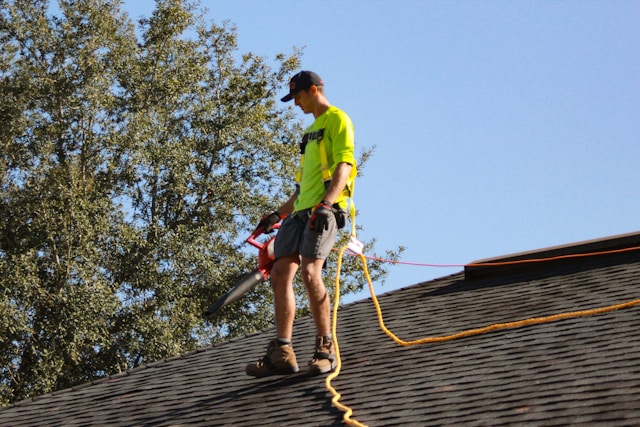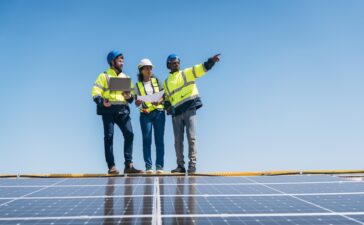Australia has a very varied climate from tropical heat to temperate storms which is a great challenge for home builders in what elements to include in a home’s design. As a home owner it is to your benefit to be able to tell the difference between what requires a small repair and what requires a full scale renovation. That decision isn’t always easy to make, especially if you are not sure of the extent of the roof damage or what the life expectancy of your materials is.
Roof Repair and Maintenance Fundamentals
Roof repair, a very common practice, includes issues such as fixing leaks, breaking tiles, or minor corrosion. These issues are usually local in which they affect only small areas and are also easy and quick to fix. Repair does well on new roofs which have had great care put into them over the years. But on the other hand full roof restoration is a more in depth process. Although restoration isn’t a total roof replacement it does bring your roof back to almost new. This option is best for older roofs that have wide spread wear but which still have good structure.
In many of the cases home owners in Australia are trying to determine what is the difference between what we term as repair and what we term as restoration which they can use to that info in making the best decision. Repairs are for that which is single in nature like that which is brought on by a storm or a fallen branch. But if you are seeing signs of general aging which includes moss growth, peeling paint, or multiple small leaks at that time it may be a go for restoration. Restoration is not just for looks, it gets to the core of the roof issues and in that process extends the life of the whole structure. In Australia’s tough climate that proactive approach also puts a stop to further decay and expensive replacements in the near future.

How So with Age and Wear?
Your roof’s age is a key factor in the decision to repair or restore. For that age range your roof is either still under warranty or in excellent condition aside from a few issues. But as a roof hits the 15 to 20 year mark which in Australia includes lots of UV exposure and changeable weather that takes a toll on materials at that point you see wide scale signs of wear and tear. At this stage restoration is the better option than a series of quick fixes. Also full restoration does not only attend to present issues but also strengthens the roof for the next couple of decades.
Roofing Material’s Influence on Decision
Tile roof which puts forward individual tile replacement, pressure washing, and application of transparent or collared acrylic finishes for repair work. Clay and concrete tiles we see to be easy to restore due to their size which is modular at 100mm x 400mm and their durable make up. As for Colorbond or Zincalume metal roofs we do see that they may be restored by way of anti-corrosive painting, rust treatment and sealing of the surface if the core structural thickness is still in good order. We do find that in cases of extensive warping in the valleys or flashings or heavy corrosion around fasteners that it is the structure which requires to be put out for replacement instead of restoration.
Short- and Long-Term Cost Influences
Low tech fixes will range from $150 to $400 which does vary by the area of damage, access issues, and if safety systems are included. As for roof restoration it is a bigger upfront cost but it does away with constant water intrusion, mould growth, and insulation saturation which in turn will reduce internal damage. Sellers that are eyeing a three year turn around often go for the repair to avoid arguments from buyers over the state of the roof.

Climate, Location, and Environmental Impact
In some coastal areas like Fremantle and Wollongong within 5 years we see bare metal which is left unattended start to show corrosion from salt. In land areas like Alice Springs we see thermal stress crack which is a result of very large day night temperature variations of over 20 degrees which in turn cause failure of adhesives and tile mortars. Around storm perimeters in Brisbane or Adelaide we see the effects of hail, wind shear and debris which in the aftermath of repair cause further to the aging of roof materials. We do see value in regular inspection post extreme weather events which in the end prevent the issue of hidden leaks which in turn causes structural issues. We see that restoration work before wide scale damage occurs also reduces the amount of material going into the land fill and at the same time improves thermal performance.
Insurance, Inspections, and Professional Advice
Home insurance which usually includes coverage for unexpected damage from things like fallen trees, hail, or wind borne debris which are considered acts of accident and not due to normal wear and tear. What is left out in most policies are issues of general wear and tear, unsealed penetrations, or long term neglect which in turn puts the full responsibility of repair on the home owner. Licensed roofers do the inspection which determines the cause of damage, material failure, and what is eligible for partial claim. Clear terms of coverage and assessment of structure’s health makes for better maintenance planning which in turn avoids financial surprises post damage.





